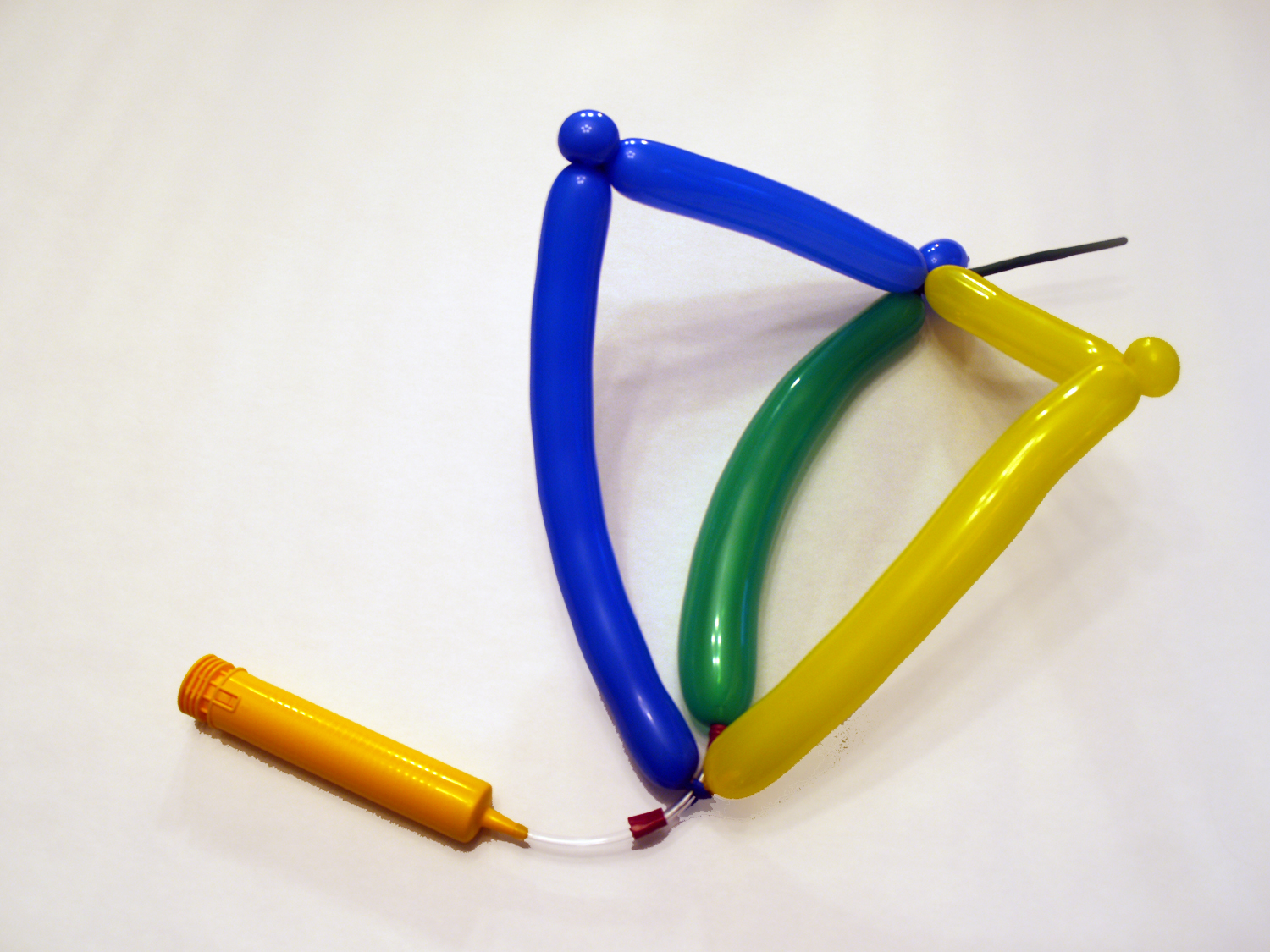
If you’ve seen the Disney hit Big Hero 6 and its star Baymax, you know that soft, inflatable robots are all the rage. Inflatable robots and robotic parts are cheap, lightweight, strong, and collapsible, making them easy to store or carry. And inflatable air muscles allow robots to move in a more natural way than gears and motors.
This project is based on a twisty balloon air muscle created by a Brigham Young University mechanical engineering student named Wyatt Felt, and adds a few twists of its own. It opens and closes a Sarrus linkage, a pair of hinges set at right angles to one another, and includes a built-in release valve mechanism. It’s easy to put together and great for showing kids (or adults) how air pressure can be used to actuate robot parts.
The Robotic Balloon Muscle project is adapted from my new book Making Simple Robots: Exploring Cutting-Edge Robotics with Everyday Stuff published by Maker Media. It’s also mentioned in Make: Lots o’ Bots from Scholastic.

















